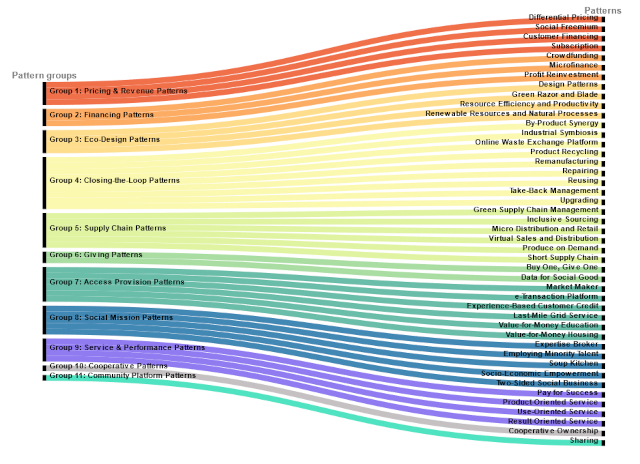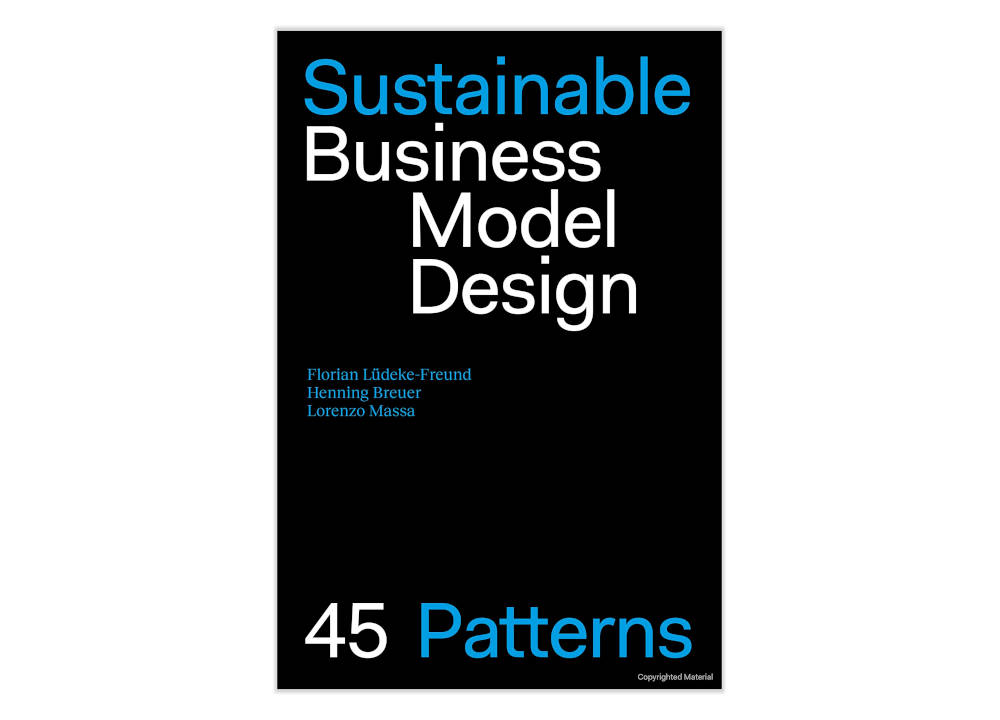Reviewed by Dr. Anjali Rajan and Dr. Keerti Pendyal
Discourses on business models have matured to a stage where it has become clear that businesses need to ensure that sustainability is a core part of their strategy or business model. It makes business sense for firms to think about sustainability from the outset rather than to bring the concept on board as an afterthought. This could be with the aim of increasing efficiencies in their business processes, reducing costs, increasing revenue, or even for the most mundane of reasons—virtue signalling.
Incorporating sustainability into a firm’s strategy helps the firm meet several challenges head on. It helps firms position themselves better with respect to the sourcing of raw materials that are slowly becoming scarcer. It helps them extract the maximum amount of surplus from the inputs that go into making their products/services. It also allows the firm to recruit the brightest talent as sustainability increasingly becomes a factor that individuals look at when considering career paths and making choices. Finally, the reasons stated above are also an important factor in pushing technological advancement and as a result in helping society advance due to technical breakthroughs several of which have come about because of seeking better and more efficient ways of production.
While the importance of sustainability is no longer questioned, with several countries/jurisdictions even introducing statutory norms to measure the sustainability of businesses, there is limited research on how businesses can go about ensuring sustainability in their business plans or strategy. In other words, how does a firm develop a business model that has sustainability at its core?
It is only in recent years that research has started looking at this question and the different components of a sustainable business model. The authors of Sustainable Business Model Design – 45 Patterns (Florian Ludeke-Freund, Henning Breuer, and Lorenzo Massa) are among some of the researchers that have started delving into this question. Several research papers have been published in the last decade that try to answer questions pertaining to sustainable business models. However, most of the knowledge developed so far has been limited to academic research journals. There are no books that help executives, policymakers, students, and the layperson fill this gap in understanding business models. This book aims to fill this gap. It presents different blueprints that can be used by entrepreneurs, executives, and students to understand how one can develop a business model where sustainability is a core aspect and not an afterthought. It also helps policymakers quickly understand what policies to pursue to encourage businesses to design their operations with sustainability at the centre.
The book begins with an introduction laying out the motivation of the authors, the purpose of the book, explanations of key terms used in the book, and suggestions on how readers can approach reading/understanding the subject in the book. It then goes on to look at the concept of ‘Sustainable Business Model Design’ before jumping into understanding key patterns that one is likely to come across in different scenarios. There are 45 patterns that are discussed in detail across 3 pattern types and 11 different pattern-groups.
Pattern types are classified according to the breadth of the patterns being discussed. There are overarching patterns, prototypical patterns, and modular patterns. Overarching patterns describe how one can “integrate major design principles into any aspect of business and organisational design” (pp. 48). Prototypical patterns deal with “how a company creates, delivers, and captures value, and so they serve to design or redesign the whole business model” (pp. 48). Modular patterns show how one “can innovate a specific part—or module—of your business model, whether resources, processes, products, communication channels, revenue sources, or something else” (pp. 48). While the patterns have been grouped into three pattern types, the authors emphasize that the different patterns can be combined according to the need or challenges facing the business. They point out that the classification into pattern types is to make their study easier and that there is no hierarchy among the pattern types.
Similarly, the pattern-groups into which the patterns are grouped are classified based on the nature of the challenge that the patterns are looking to address. For example, patterns that address issues about revenue are grouped together as ‘Pricing & Revenue Patterns’. As in the case of pattern types, there is no hierarchy among the pattern-groups and patterns from different groups can be mixed to address the challenges faced by the business. In fact, when discussing each of the 45 patterns, the authors themselves recommend other patterns that could complement the pattern being discussed. They also highlight the challenges that can be faced by executives/entrepreneurs when applying these patterns to meet the needs of the firm. It is these two aspects in addition to discussing the patterns from the perspective of sustainability that adds immense value to the discussion in the book. In addition, the authors also give examples of firms that have used the patterns being discussed to great effect when dealing with various challenges.

In addition to discussing the 45 patterns along with examples, challenges in implementing them, and other patterns that may complement the pattern being discussed, the authors also suggest to the readers the approaches that they can take towards implementing the patterns. They discuss two approaches—to address problems that have already been identified or to explore new opportunities that may result in value creation.
As mentioned earlier, this book helps disseminate the research undertaken by various academics and researchers (including the authors) to a non-academic audience. It helps its readers better understand how a business model becomes a sustainable business model. It assumes that the argument about the importance of sustainability in businesses is settled and proceeds from that starting point. The authors also take it as an axiom that it is essential for firms/businesses to turn a surplus. The patterns presented and discussed in the book assume that for a sustainable business model to be successful it will have to align with the profit (or surplus) seeking motive of the firms implementing the model.
The authors have been able to make important contributions to the literature on sustainable business models. The grouping of the patterns discussed into pattern types and pattern-groups provides the readers a good framework to start addressing the challenges they are/may be facing. Additionally, the discussion on each of the patterns also includes suggestions on other patterns that may be complementary to the pattern being discussed. These suggestions are based on the experience of the authors as well as research undertaken that helps the readers to identify the most commonly occurring sets of patterns in the real world—patterns that can together address the challenges that an organization may face. Discussion of the patterns also includes a section on the difficulties that may be faced when implementing them, thus preparing the reader to potential challenges. Perhaps the most important contribution made by the authors in this book is to recognise and focus on the point that resource efficiency is just one aspect of sustainability. This is important because firms and governments frequently consider resource efficiency as the only facet when talking of sustainability.
While the above points alone make this book a must read for executives, entrepreneurs, and others, there are a couple of areas that the book could have addressed in greater depth. This book is aimed primarily at executives, entrepreneurs, or students of management. Policymakers and government officials can also learn a great deal leading to insights on developing policies that would help them encourage sustainable businesses and organizations. However, the authors do not explicitly consider this audience when discussing sustainable business models. This appears to be a big oversight as government is a very important partner and driving force in ensuring the success of sustainable firms.
Another area the book can address is while discussing the pattern triangle. In addition to grouping the patterns across three pattern types and 11 pattern-groups, the authors also position the patterns within a pattern triangle. The three vertices of this triangle are economic value creation, social value creation, and ecological value creation. The basic premise of positioning the patterns within this triangle appears sound. A pattern is positioned within the triangle based on its performance on these three parameters. For example, a pattern may result in a great amount of economic and social value creation while resulting in little ecological value creation. However, the use of a triangle to address the topic of value creation makes it appear that it is an impossible trinity for a sustainable business model to achieve. In other words, the conclusion one reaches is that it is impossible for a sustainable business model to score high on all three parameters at the same time. If that is indeed the case, the reasoning for this is not discussed. We feel using Venn diagrams might have been a better representation if the three parameters are not part of an impossible trinity.
Despite these two areas that we think that the authors could have discussed in greater detail, the book Sustainable Business Model Design – 45 Patterns is an important starting point to help non-academic audience understand sustainable business models, their features, opportunities, and challenges. We hope that the book spurs practitioners to begin including sustainability as a core part of business models and that it inspires students to pursue a career in sustainability—either as practitioners or researchers studying the topic.
Dr. Anjali Rajan and Dr. Keerti Pendyal are both Assistant Professors at the School of Management, Mahindra University



